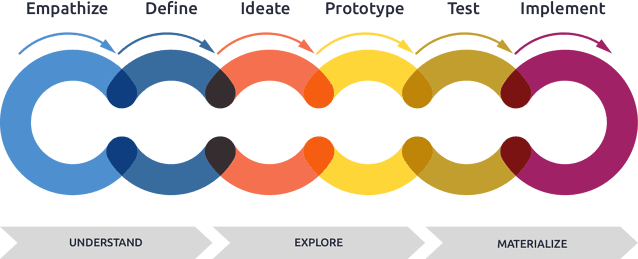During the 1983 summer, six months before it was time to launch the first Macintosh, Steve Jobs said,
“It would be a little like a record store, where the software would be downloaded over phone lines.”
That is what we call the App Store today!
Over these 25 years, mobile apps have come a long way. You can find them in every walk of life, right from shopping from groceries to reading and catching up on the daily dose of news.
According to Statista, as of the 3rd quarter of 2019, all the major app stores are home to over 5.4 M mobile apps.
Smartphones have become our weapon and tool of choice. The advent of mobile apps leverages the benefits of the smartphone era. You see, it does a fantastic job of bridging the gap between customers and themselves.
We are inching closer to 2020. The mobile app development market is saturated. Competition is stiff. Innovation is the only way out from here, is it?
Not really.
Crafting and adhering to best practices make you stand out too. And it comes from the consumer, not you!
The customer becomes your brand advocate, and customer satisfaction flywheel promotes exponential growth. Like Zig Ziglar said,
“Take care of the small things, and the greater things take care of itself.”
Back to the point, what are these best practices? What do they do? Why do we even need them?
Mobile app development is an overwhelmingly long process with small pointers leading to either failure or success. Irrespective of whether you are just starting up or a well-established recognized brand in your industry, these best practices serve as the perfect trail of breadcrumbs to ensure optimum function and thereby derive maximum outputs.
Here is the list of Mobile App Development Best Practices that you must follow in 2020:
1. You cannot deny Market Research!
Remember, Lay’s Wow! Chips?
Lay’s Wow! Chips were launched in the US as a low-fat substitute for regular chips. Yes, taste tests were performed. But what they forgot was that the fat they used- olestra could cause gastrointestinal distress when consumed in large quantities.
And guess what, overeating has been a common problem associated with the American population. After a loss of $150M and warning labels on the packs, the company discontinued the product.
The point remains that if they had researched their consumer’s behavior, they’d have found out about overeating. To create a successful product, the first step is to understand the market.
- Who is my target user?
- What are their chief concerns?
- Is my idea holding valid for my target audience?
- Do they have any other concerns that could hamper a customer placing their trust in my product?
- How can I waive those concerns for my target audience?
These questions form the basis of what we, at SoluteLabs, call the why of building a product
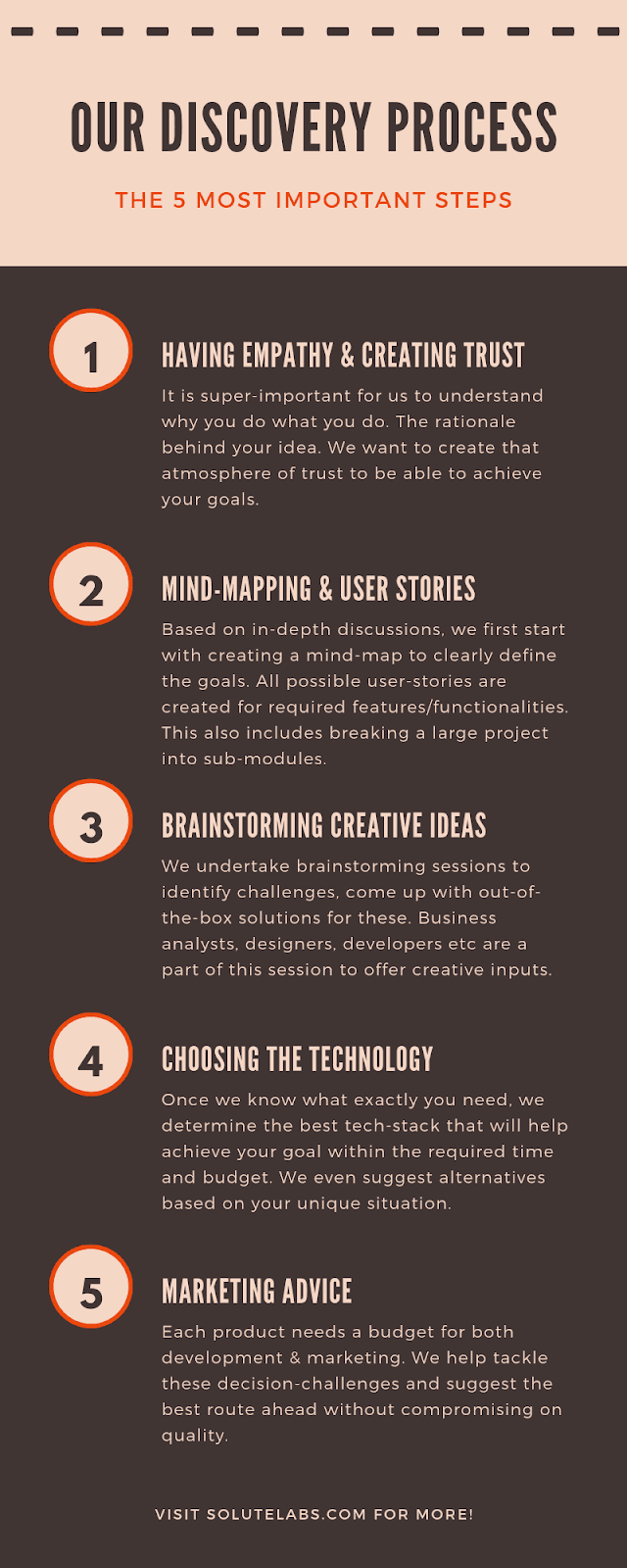
Trust us when we say this, the sailing gets a lot smoother when you answer these questions. That’s the reason why we consider it as the #1 mobile app development best practice to be followed in 2020.
2. What are your competitors doing?
With your app idea, it is highly unlikely that you are coming up with something new altogether. Chances are other apps that are doing something similar to what you aim to achieve.
Even Facebook had to beat MySpace and Orkut to excel as the leading global platform.
Identify your competitors. If you are looking to add a food delivery app that exclusively delivers food from your in-house menu, take a look at the likes of Behrouz Biryani and Mojo Pizza, and Zomato and Swiggy.
The first set of examples is direct competitors, whereas the second set is indirect competitors. However, both of them might have identified specific market trends and built features around it to alleviate stress from the customer’s end.
Figure out what they are trying to achieve with their branding and marketing strategies. Create a SWOT analysis of all the key competitors and identify opportunities for your product for sustained growth. This will help you gauge the trends on the business owner’s end in the industry.
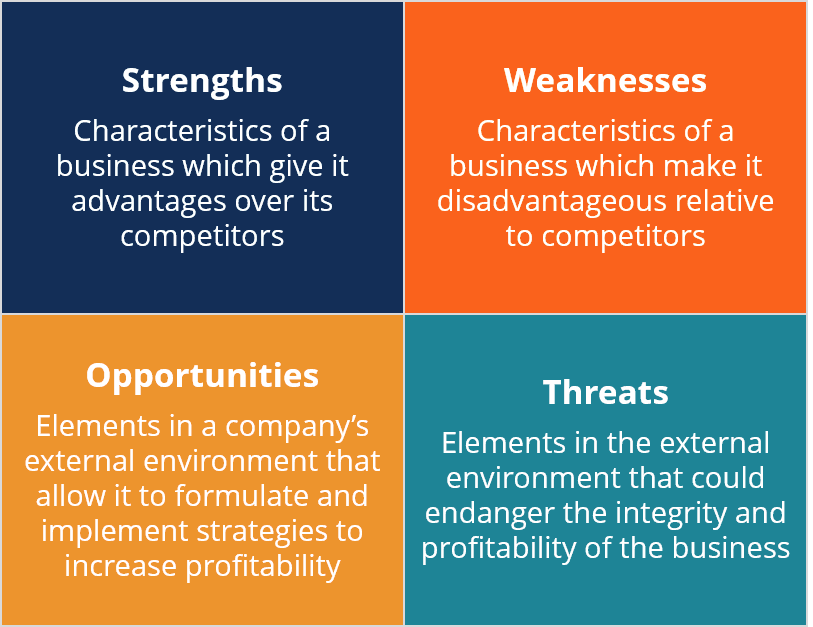
3. Select the right framework
Let’s be honest here. Every idea is different. The execution mode that helped others may not be best suited for you.
What works for others might not work for you. And vice versa.
Therefore, it is essential to identify whether you need a native, hybrid, cross-platform mobile apps (Flutter or React Native) or a Progressive Web Application (PWA). Hence, we consider it as one of the top mobile app development best practices for the year 2020.
Opt for a flexible approach and adapt based on the needs of the product. Rigidity in the plan will only compromise on the quality of the end product.
In our previous post, State of Mobile App Development in 2020, we have an extensive analysis available on how to select the right framework and the overall trends associated with the frameworks in 2020.
4. Identify your User Persona
Another best practice every mobile app developer need to follow in 2020 is to learn everything about who is going to use your mobile app.

What are some traits of your ideal mobile app user?
Given a choice, would they prefer A or B? What would be their preference?
The point of an application is to solve a problem for your users. To say that your mobile app bears the potential to solve everyone’s problems is INSANE.
Besides, in the digital era, customers crave attention to detail. They need a tailored solution with so much precision that it puts them in awe. The product should speak to them personally.
Under such circumstances, you need to develop the ideal user persona of your mobile app.
- What’d be their age?
- Where do they live?
- What is their spending limit with the unique problems that you are trying to solve?
- What are some concerns that they’d want to get resolved?
- What are the critical pain points that you’d be resolving with your proposed solution?
The flow builds from there.
And this is unique to every application.
For a fintech startup, you’d want to target millennials with a limited spending budget.
However, for a grocery delivery service providing application, the buyer persona would be an earning millennial or a working couple facing time crunch and hence would like to get the groceries delivered.
Once you chalk out the ideal buyer persona, you can further approach them and record their reactions and concerns. From there, it is about testing and sharpening the image as well to suit the needs of the ideal mobile app user.
At this stage, some companies also address other unmet needs from the existing businesses in the market to craft their unique selling propositions.
This user persona also serves as the basis of effective branding and marketing strategies. This can be deployed on several digital platforms, including social media, paid ads, and online campaigns, as well as offline events.
5. User Experience is the key to Reduce App Churn
Any app developers’ worst nightmare is App Churn. Essentially, the user downloads the app but stops using it. Localytics reported that App Churn increased steadily throughout three consecutive months post the user downloaded the app leading to 71 percent average churn.
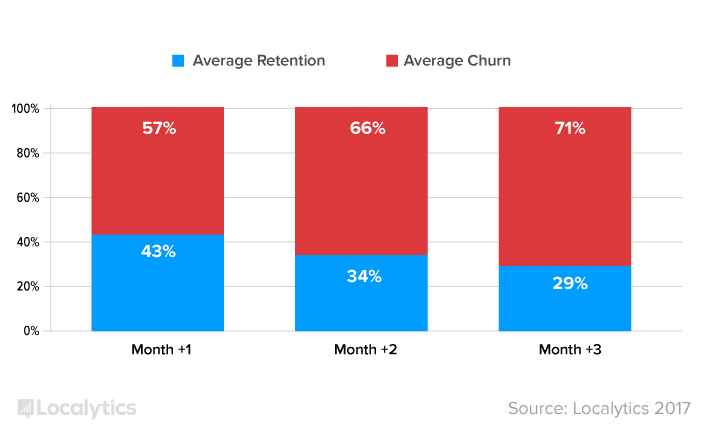
The easiest way to keep the churn rates under control, providing the user with a good experience, is the key to keep them coming back again and again. Thankfully, there is plenty of room for enhancing user experience with simple hacks. Here are some we swear by:
- Resolving bugs and glitches by thorough testing
- Prioritizing key features and incorporating them in the user onboarding
- Including only limited information for user input. This includes signing up for newsletters, in-app purchases, and in-app feedback forms.
This is just the tip of the iceberg. If you are specifically looking for advice on sharpening the user experience, we have a dedicated, step-by-step guide. Read it here.
6. Build your app UI strategically
Often, app UIs get complicated and take the focus away from the essential features. More often than not, it is about the visual components and the mockups. What an ineffective UI does is, it takes away from the app context.
Do you want to create an insanely addictive application that the user wants to keep coming back to? You are in luck! Solute Labs create apps that hook the user and keeps them coming back for more. Book a consultation today.
Here is where your buyer persona comes into play again. With the demographics of the user persona, bring the intuitive factor back into your wireframes, prototypes, and user interface. A graphic user interface is your best bet in 2020. But if it is not defined well as per the expectations of your buyer persona, then it will render the product obsolete for your customers.
7. Eliminate the clutter
Clutter is anything and everything that doesn’t add value to your product. Mobiles come in all sizes. So when you add a lot of unnecessary elements, the user will find it incredibly challenging to navigate through the application, ultimately hitting the uninstall button.
But what are some potential sources of clutter?
- Too much text: Long-form copy does not belong in mobile applications. Period. Enough said!
- Too many features: highlight the most unique and straightforward selling propositions. Highlight secondary features slowly and lets them get the hang of it slowly. This works best for mobile healthcare apps for the elderly.
- Too many push notifications: Choose the best slots for pushing the notifications. To come back to your phone from 20 notifications from the same product is not a nice feeling.
The idea behind eliminating the clutter is not to overwhelm the user. Whenever in a state of confusion, the user will always resort to a no.
8. Sorry, Security is NOT optional!
Earlier this year, Zimperium published a list of the 30 best cost travel applications that allowed users to book flights, hotels, and cars on a rental basis and disclosed that 100 per cent of iOS apps were insecure. Android apps performed way better at 45 per cent, demonstrating insecure behavior.
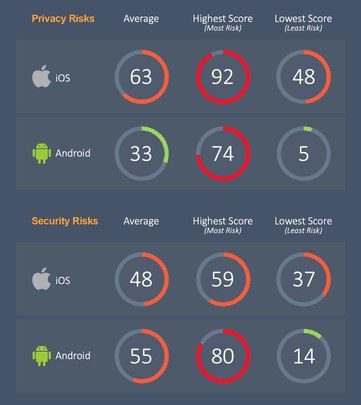
In the age of ransomware and complicated malware, security is no longer an option; it is a necessity.
Security issues in apps generally develop through the usage of external software development kits, errors in encryption (or absence of encryption at all!), and more.
Security becomes an even more important aspect, particularly in fintech and healthcare mobile applications. For embedding in-app purchases as well, it is best to have encryption to build trust with your users.
App security is an ongoing process and should be effectively integrated into the app maintenance process as well.
10. Adopt Agile Scrum Methodology and Stay on Track
App development is a collaborative process with multiple tasks running in parallel. Given the situation, Agile methodology comes in as an important tool for mobile app developers.
The agile methodology follows the following core values:
- Responsive to changes in plans
- Customer collaboration over contract negotiations
- Working products instead of comprehensive and exhaustive documentation
- Tool and process-based interactions between an individual and teams
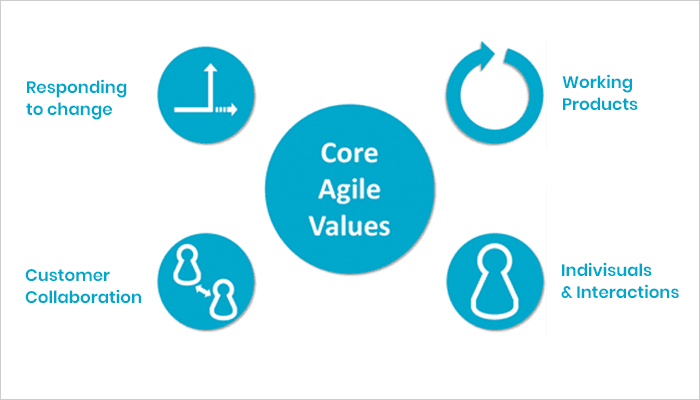
All of these core values contribute to a high functioning environment by:
- fast-tracking the development process
- lowering risk factors and developmental costs
- effective management of tasks, and
- higher Returns on Investment (ROI)
An agile approach allows you to establish micro-milestones, which, in turn, allows the user to accomplish targeted action via sprints: separation and segregation of product lifecycle into smaller, bite-sized chunks. These sprints also reduce the chances of redundancy since everything is well calculated and planned meticulously.
Agile Scrum methodology is becoming popular mostly with small and medium businesses as well as large enterprises alike. And why should it not? The angle with meticulous planning and the element of calculated risks with clarity in measurability is the primary reason Fortune 500 companies are adopting Agile with enthusiasm, only keeping the broader vision in mind.
11. Scalable mobile applications are the future
The real test of your product is how well it responds to sudden surges in traffic. The last thing you want is to let your app crash and burn when the demands are peaking. The solution is developing a scalable app.
The scalability of a mobile application determines, “Can your product handle large consumer bases without any technical glitches? “
An excellent example of a scalable mobile application would be Netflix. In “Netflix: What Happens When You Press Play? ,“ Todd Hoff describes the elements of scalability embedded in Netflix. With a wide user base, Netflix facilitates simple “play and stream” through a Content Delivery Network.
However, if there is one key takeaway from the overall analysis of facts that Hoff put together: scalable apps need a strong foundation.
- Embed scalability from day one by choosing the database and the programming language accordingly
- Perform full load and performance testing. Experts from around the world emphasize determining scalability through extensive testing.
- Develop copies on the server. Replicate back end codes across multiple servers.
- Identify if there are any single points of failure and eliminate them. At Solute Labs, we approach the elimination of a single point of failure horizontally.
- Don’t cache all your data. Cache data points that are retrieved frequently. This ensures that the data is retrieved at lightning speeds even during peak volumes.
12. Keep everything documented
I know what you are thinking. Agile Scrum methodology does not necessarily mean zero documentation. It is quite the opposite.
The goal with technical documentation is to keep the stakeholders and others involved in the app development process to stay aligned. Technical documentation belongs to two categories: product documentation and process documentation. While product documentation focuses on the tasks at hand and how to accomplish the desired result, system documentation, on the other hand, helps external stakeholders understand the technology.
In the long haul, it also serves as the primary reference material to introduce tweaks and changes during update rollouts.
13. Stop wondering, get tracking!
As the creator of several award-winning mobile applications, if we have learned a lesson the hard way, it is the value of setting up tracking APIs and plugins in the back end before the app is rolled out for beta testing.
You will be amazed at how something as simple as this could improve the quality of the end product. While the DAUs and MAUs won’t matter during the beta testing phases. Record relevant app success metrics instead.
What was the average time spent on the application? What was the time frame that was taken for accomplishing specific, key actions? Did the beta testers adopt the same navigation process put together that you had laid down? The deeper you dig, the more it allows you to find pain points quickly.
The benefits, you ask?
- Faster identification of potential pain points
- Easier root cause analysis
- Better insights into the performance of the application in the real world
It has also helped us identify the scope of improvement faster and deal with it with supersonic efficiency. As a result, we have developed applications that have reached its ROI goals more swiftly than the tentative timelines.
14. Beta Testing is the real deal
While a lot of developers pay attention to the volume of beta testers and the delivery platforms, a lot of it is still seen as a practice drill. However, with all the time, effort, and money that is poured into the final product, it demands that the process is taken more into deriving clarity.
Here are some best practices for effective beta testing that we recommend at SoluteLabs:
- Get beta testers whose personalities are close to the buyer persona
- Engage the testers like you’d engage your customers
- Make connections with passionate beta testers. Trust us; it helps you with gaining more clarity.
Not all beta testers provide high-quality inputs. It is unreasonable to expect such results. However, with a filtration process, you will be able to distinguish the changes that need to be made right away. Furthermore, it also helps you build an inventory of changes that can enhance the quality of experience that you provide to your customers.
15. App Maintenance and Update Plans: Major Update Rollouts, and more
With a mobile application, your work is never truly finished. “Created once, and deployed forever ” is the biggest misconception in the app development industry altogether.
With regards to app maintenance, here are a few things we personally do for our clients to help them with app maintenance:
- Check if the app works seamlessly, without any glitches with upgrades in the operating system
- Check external sources of code, i.e. code libraries and ensure that the libraries are updated and not hindering any processes
- Monitor any bugs and security loopholes that can compromise user data
- Ensure file compression, particularly, if the apps use HD quality multimedia and cache data for performance optimization
For app updates, it is essential to upgrade app pages on app stores to ensure optimum performance. Every app rolls out significant enhancements or new features once in a year. These changes demonstrate that you, as a business, care for the user, and are striving to achieve better.
16. App Monetization Plans
Most appreneurs have this vision:
- Find an idea
- Develop the app
- Market it effectively
- Make a fortune that they can live off for the rest of their lives
They miss one tiny detail, though. Where is the cash flow going to come from?
- In-app purchases?
- Premium Features that are available on a subscription basis?
- Paid ads?
- Dedicated ad space for sales?
- Or, does the idea of affiliate marketing sound alluring?
There are several app monetization strategies out there. You need to find the monetization strategy that suits your business model the best and leverage it to recover the investments in app development, as well as app infrastructure.
The roads from investing in building an application to making the profits are steep. Only 0.01 percent of the apps do successful businesses. Therefore, it is essential to have an app monetization strategy in the product before the product hits the market.
17. Gather In-App feedback
The focal point of a mobile application is providing convenience. However, giving convenience becomes difficult in case you are not open to suggestions and gather feedback from your existing user base. And apps that are leveraging in-app feedback are doing either of the two:
- Asking for feedback way too early
- Prompting the user to fill out unnecessarily lengthy forms
In the first circumstance, the customer does not have enough to provide quality feedback. In the second scenario, the user does not have enough bandwidth to accommodate providing feedback while keeping up with the endless fields.
To effectively gather quality in-app feedback, introduce feedback accordingly. For example, after the completion of an order, or if you are an e-commerce application, then post the delivery of the shipment. In-app feedback can further be analyzed via keywords for market research and identifying the further scope of improvement.
At SoluteLabs, we ensure that in-app feedbacks and app store feedbacks are researched well before introducing major annual upgrades to the apps we develop for our clients.
Do you have anything from the top of your mind that would add value to the existing list? How did it occur to you? Could you drop us a word in the comment box? We’d love to hear from you.

